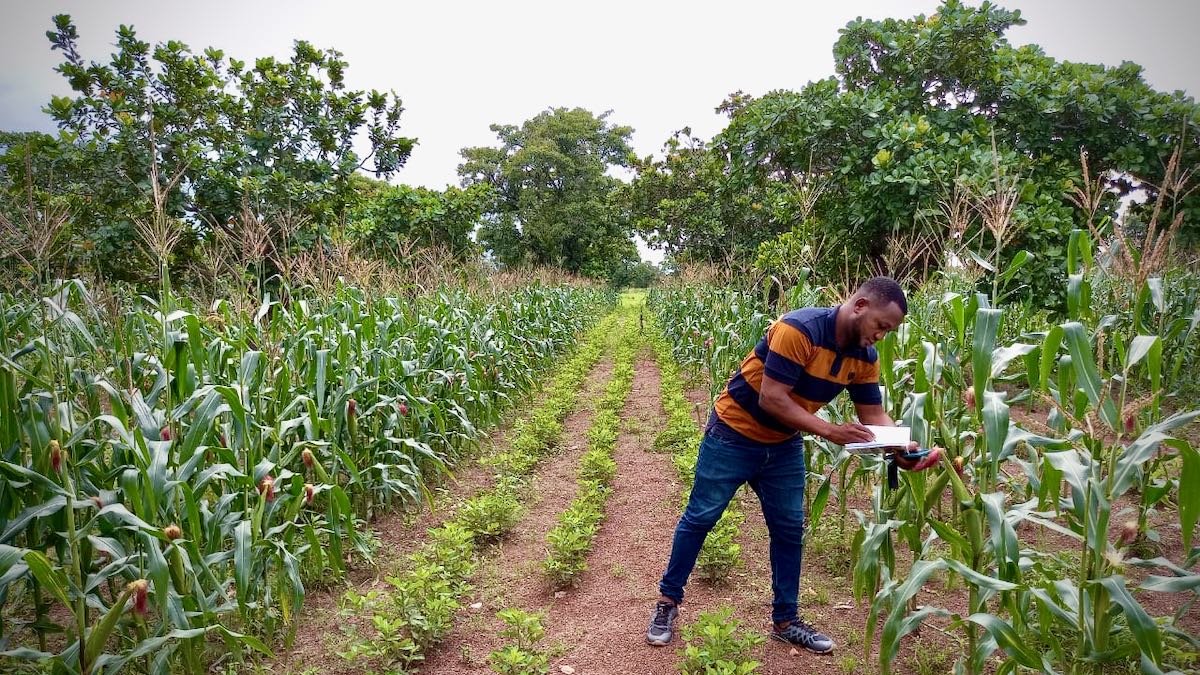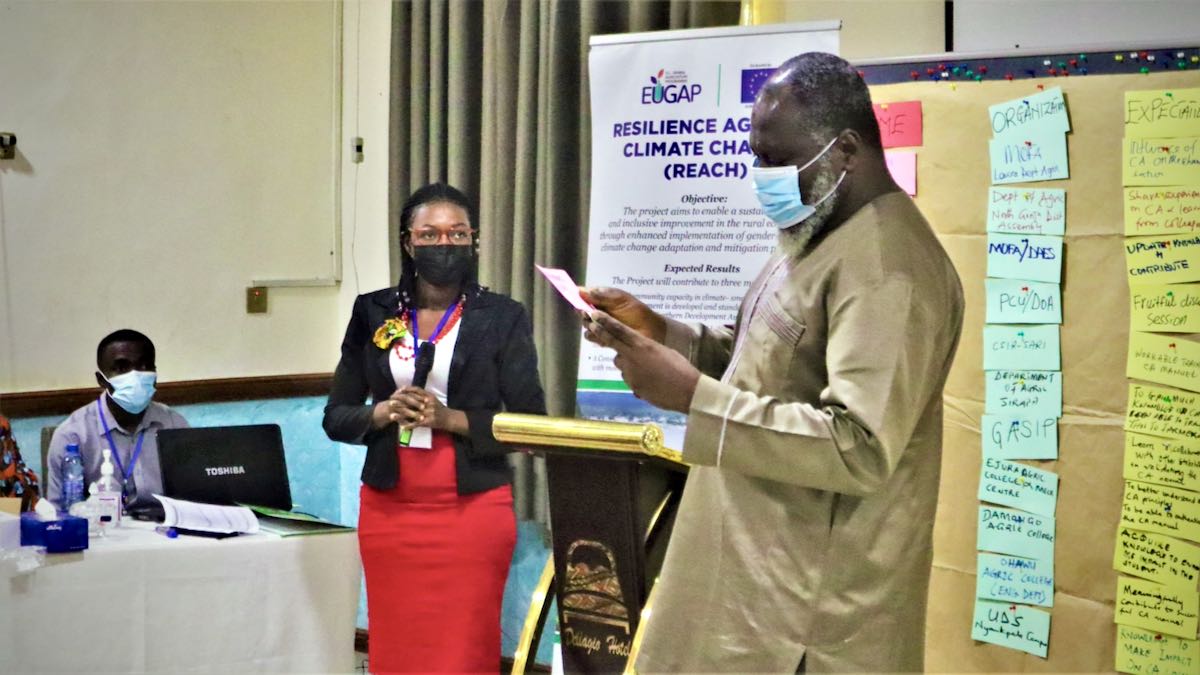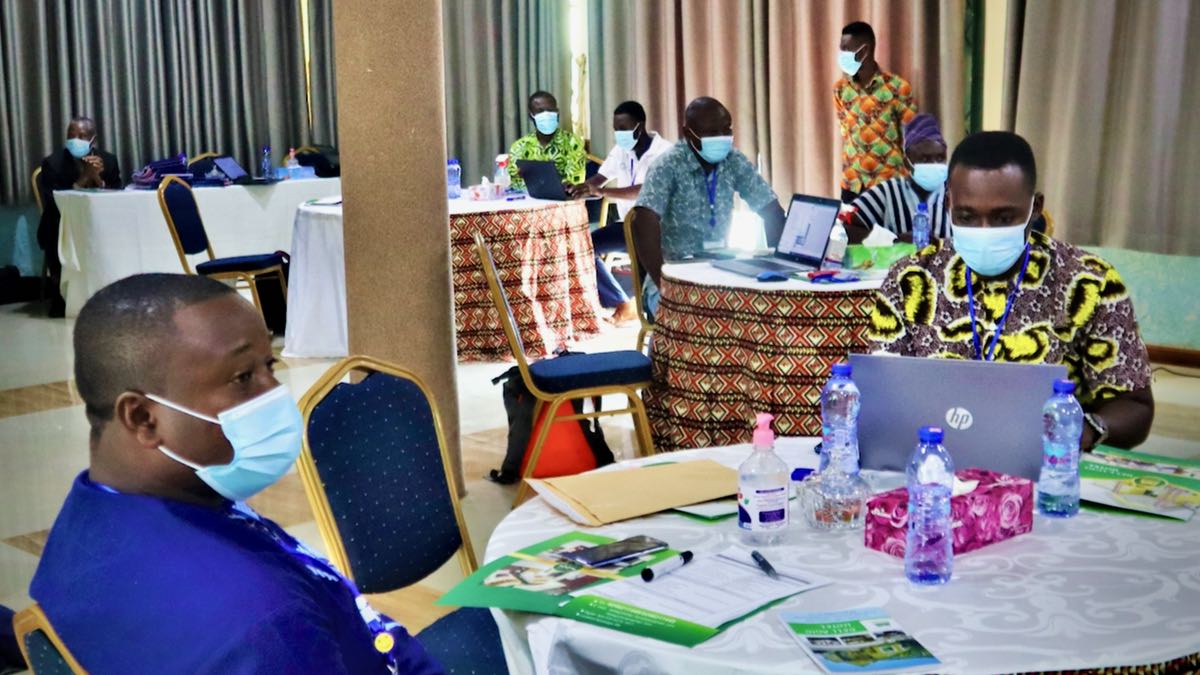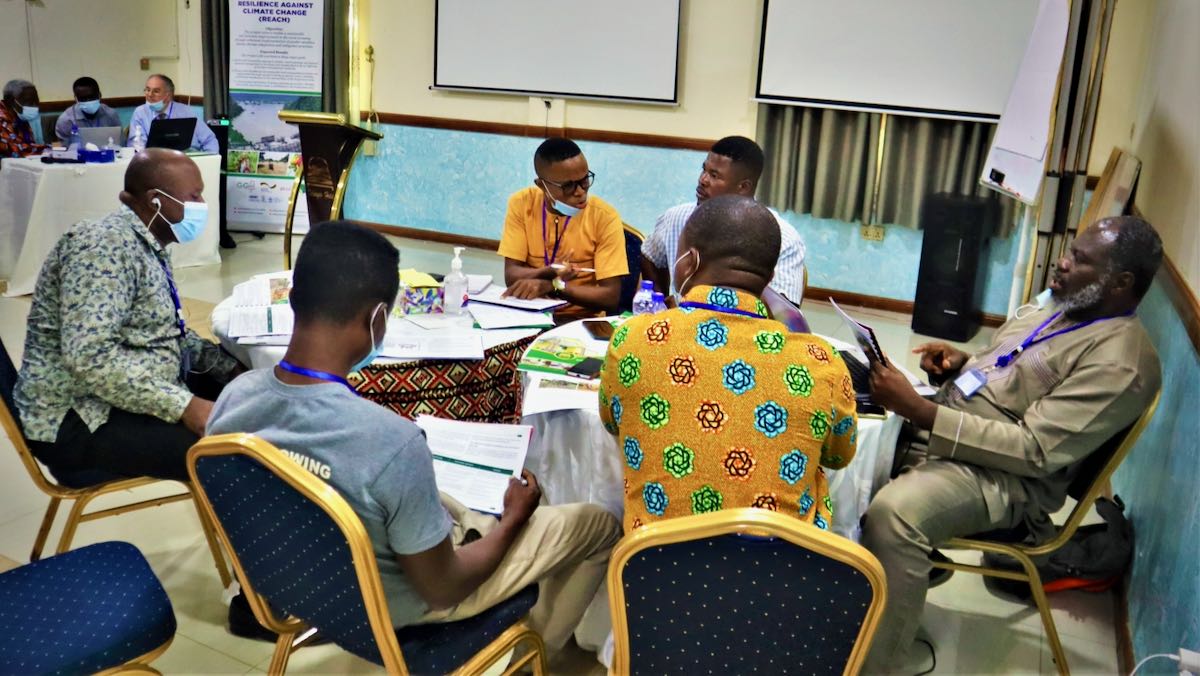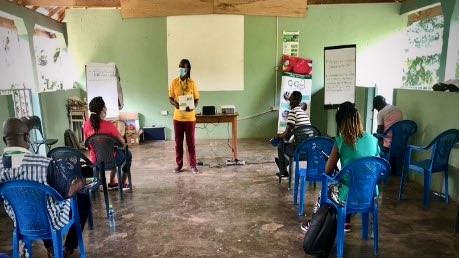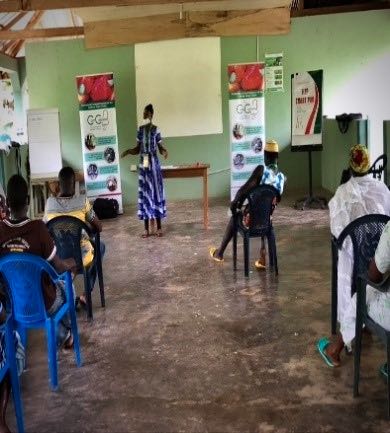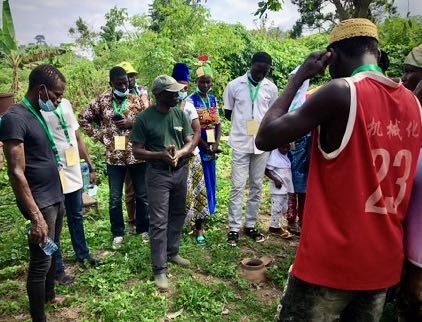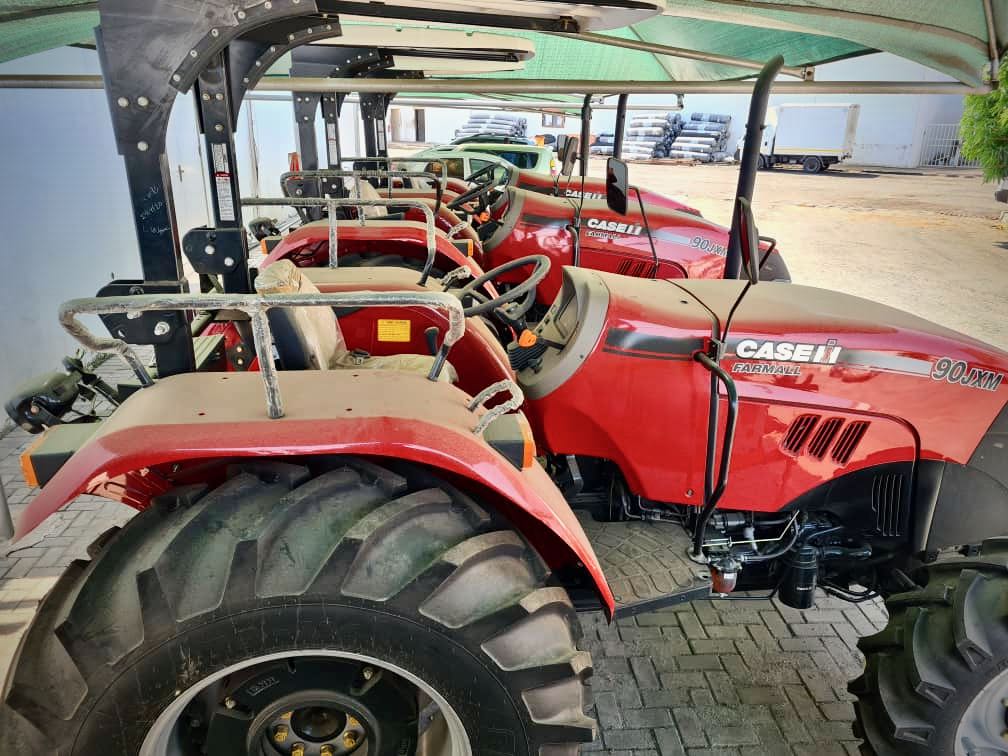Soil Fertility Loss Is a Major Threat to Sustainable Agricultural Production
Read about the efforts to improve institutional, communal and household awareness of conservation agriculture and agroforestry practices in Ghana
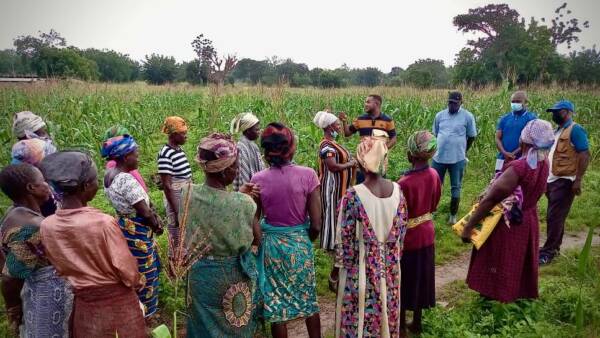
Training on conservation agriculture principles ⎮ Photo © GIZ
Climate change has a enormous impact on agricultural productivity, especially in regions where farming heavily depends on the weather. As this dependency on the weather varies a lot, the effects over longer periods of time are unevenly distributed across the globe.
It is evident that agriculture suffers from this menace in terms of reduced productivity and diminished livelihoods through increased weather variation due to poor predictability and the gradual depletion of natural resources.
However, it’s important to note that agriculture also contributes to the changing climate by, for example, converting forests to arable lands and the emission of greenhouse gases. Therefore, the central role of agriculture in averting climate change and its impact through enhanced practices cannot be underestimated.
In this context soil fertility loss is identified as a major threat to attaining sustainable agricultural production and food security in many developing countries — where it is mainly caused by environmental factors and the socio-economic impact it has on the agriculture sector.
Some farming practices employed by farmers in tilling the land and managing crop production systems lead to excessive mining of soil nutrients without any definite attempts to “give back” to the soil — for example with other crop production systems, some of which are indigenous in orientation and easy to practice.
This situation of smallholder farmers is exacerbated because their reliance on the weather makes them increasingly vulnerable to climate change.
Building awareness on conservation agriculture all around
It’s against this backdrop that GIZ-ComCashew with its Resilience Against Climate Change (REACH) project works on improving institutional, communal and household awareness of the benefits of conservation agriculture and agroforestry practices.
The activities are geared towards increasing the rate of the practices that are taken up, whilst building institutional capacities to ensure long-term sustainability after the conclusion of the project in the future.
Principles
- Minimum or no soil disturbance
- Crop diversification, including agroforestry
- Maintenance of permanent soil cover
Agronomic practices encouraged
- Ripping and herbicide application and planting, crop rotation
- Mixed cropping (intercropping and strip cropping)
- Agroforestry
- Retention of crop residue
- Planting of live cover crops, i.e. mucuna, Canavalia, pumpkins, Cajanus cajan etc.
What’s been done on the institutional level
Jointly with the Ministry of Food and Agriculture, the project developed a conservation agriculture manual, which was validated by all relevant stakeholders.
The manual will form the basis for the development of in-service training of agricultural extension agents at the Damongo Agricultural College whilst taking steps to streamline the manual in the two-year regular training program of the agricultural extension agents across all agricultural colleges in the country. This would then fill the gap in their curriculum, as currently it has no course on conservation agriculture.
Once published the manual will also help generally in extension delivery approaches on conservation agriculture across Ghana by both governmental and non-governmental organizations, educational and research institutions.
A conservation agriculture demonstration plot, Gbetuori-Jirapa ⎮ Photo: © GIZ
As part of the institutional interventions, the Resilience Against Climate Change project is developing the Babile Agricultural Research Station into a conservation agriculture dissemination center of excellence to complement the only one existing in Ghana.
As a result, six conservation agricultural demonstration plots have been established with the incorporation of different agroforestry practices with side-by-side controls.
Three of these plots have been dedicated to cashew agroforestry and the other three integrate cashew and mango on the same piece of land.
All six plots have Sanae siamea (Cassia) as boundary hedges to serve as windbreak and additional foliage to provide soil cover and a strip of leguminous shrubs with the purpose to improve the nitrogen content of the soil.
The six conservation agricultural demonstration plots have been cited considering the varying soil characteristics of the station. The center is also being supported with a 15-acre area for the trial of new conservation agriculture technologies that is adaptive to the Northern Savanah agroecological zone.
Intercropping practices, crop rotation practices, cover crops adaptive to the area and leguminous shrub integration suitable for the area are being tried and tested for upscaling in the project intervention communities.
The intent of these interventions is to assess the improvement of soil fertility over time which would then form an empirical basis for future interventions in terms of appropriate practices required for the amelioration of soil fertility. Also, this would provide a good basis for the training of agricultural extension agents and farmers on best conservation agriculture and agroforestry practices for replication.
Participants at the conservation agriculture manual validation workshop ⎮ Photos: © GIZ
Over the past year, the project has also established 18 community conservation agriculture demonstration plots across the North-Western part of Ghana. During this period, these plots have served as learning grounds for farmers in the communities and have since enabled the project to train almost 2,000 farmers on the core principles of conservation agriculture.
The training was spearheaded by agriculture extension agents whose operational areas fall within the project communities as this was intentionally fashioned to ensure the sustainability of the interventions especially after the cycle of the project.
For 2022 the intent for this is however to propel and ensure increased adoption of conservation agriculture and to upscale the demonstration plots from 18 to 50 communities, as it has proven to be a more viable approach to disseminating conservation agriculture techniques.
Farmers get the opportunity to see whatever is being disseminated, ask as many questions as possible while learning along the developmental stages of the crops and the outcome of the interventions.
In order to achieve this milestone resource persons were trained on the principles and practices at the only conservation agriculture center of excellence in the country (i.e. the Center for No Till Agriculture) to be better equipped for step-down training. A total of 76 resource persons were trained comprising of 20 agriculture extension agents, 39 farmers and 17 master trainers from ComCashew’s master training program.
Training at the Center for No Till Agriculture
Photos: © GIZ
Photos: © GIZ
Current challenges
Mechanization has been one of the factors bedeviling the full adoption of conservation agriculture. The required equipment is unavailable in the North-Western part of Ghana, making it difficult for farmers to practice minimum tillage as a principle.
Farmers are compelled to keep on using the disc plow as a land preparation tool. This, coupled with the use of tractors that are not conservation agriculture friendly, continuously disturb the soil structure and essentially defeats the purpose of mechanization in conservation agriculture.
As a result of this shortfall, the project has invested in six conservation agriculture friendly tractors and 40 conservations agriculture implements to provide ready services for farmers in the area to propel the adoption of conservation agriculture. These implements involve rippers, harrows, pneumatic planters, boom sprayers and jab planters. With the availability of these implements, some 600 acres were ripped and planted during the 2021 production season.

